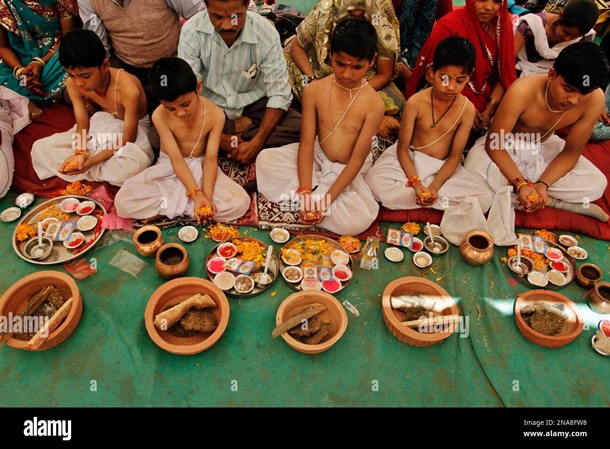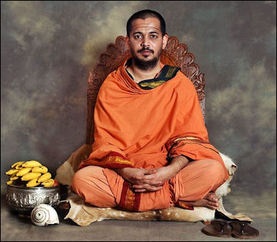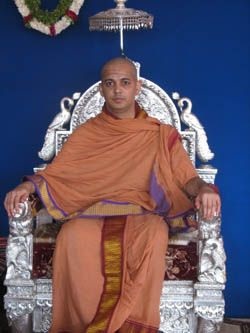I was born in Ayodhya to my parents Thakur Prasad Dubey and Urmila Dubey and inherited Brahmin Culture,encironment and customs from them inherited in them from our ancesstars..
By Prof (Dr) Ratnesh Dwivedi, South Asia Correspondent-Blue Aurora Media,London, Collaborating Analyst-OCATRY at INISEG,Madrid,Spain and Contrbuter-The Korrespondent,Ukraine.
(For Full and Detailed Description, buy my Book- The Brahmins published by Amazon)
The Beginning of
Divisions among Brahmins: sutra Period: During the sutra period,
roughly between 1000 BC to 200 BC, Brahmins became divided into various Sakhas or
branches, based on the adoption of different Vedas and different readings and
interpretations of Vedas. Sects or schools for different denominations of
the same Veda were formed, under the leadership of distinguished teachers among
Brahmins. The teachings of these distinguished rishis are called
sutras. Every Veda has its own sutras. The sutras that
deal with social, moral and legal precepts are called dharma sutras,
whereas those sutras that deal with ceremonials are
called Srauta sutras and domestic rituals are called gruhya
sutras. sutras are generally written in prose or in
mixed prose and verse. These sutras are based on divine
Vedas and are manmade and hence are called Smritis, meaning “recollected or
remembered.”

There are several Brahmin law givers such as
Angirasa, Apasthambha, Atri, Brihaspati, Boudhayana, Daksha, Gautama, Harita,
Katyayana, Likhita, Manu, Parasara, Samvarta, Sankha, Satatapa, Usanasa,
Vasishta, Vishnu, Vyasa, Yajnavalkya and Yama. These twenty-one rishis
were the propounders of Dharma Sastras. There is a lot of contradiction
among theseDarmasastas, even within one Smriti. These differences in the
rules and rituals resulted in the rigid stratification of subcastes among
Brahmins. None of these smritis is supreme and universally applicable
throughout the Indian Continent. The oldest among these Dharma Sutras are
Apasthambha, Baudhayana, Gautama and Vasishta Sutras.
Apasthambha: Apasthambha, a
native of Andhra Country, belonged to Krishnayajurveda School.
He belonged to fifth century BC. Apasthambha’s teachings are called Apasthambhasutra or Apasthambhasmriti.
Baudhayana: Baudhayana also
belonged to Krishnayajurveda School and was an inhabitant of
Andhra Country. Baudhayana’s teachings are called Baudhayanasutra or Baudhayanasmriti.
Brihaspati: Brihaspati was
probably the first jurist to make a clear distinction between civil and
criminal justice. Yajnavalkya referred to Brihaspati. However, Brihaspati
is considered to belong to 200-400 AD. Brihaspatismriti has
a lot of similarities with Dhammathats of Myanmar (Burma).
Gautama: Gautama was the
most ancient sage of all Brahmin lawgivers. He was quoted by Baudhayana and
belonged to Samaveda School. Gautama’s teachings are called Gautamasutra or Gautamasmriti.
Harita: Baudhayana and
Vasishta in their Dharmasutras quote Harita. Haritasmriti or Haritasutra
is an extensive work.
Katyayana: Yajnavalkya
mentions Katyayana. Katyayanasmriti is quoted in several works of Viswarupa,
Mitramisra etc. Smriti Chandrika cites 600 verses of Katyayanasutras.
He may belong to the same period as Narada and Brihaspati.
Manu: Manu is a
mythical personality and is the ancestor of the entire humankind. Manu
received the code from Brahma, and communicated it to ten sages and requested
Bhrigu rishi to repeat it to the other nine. This code of conduct recited
by Bhrigu is called Manusmriti. For convenience, the British
took Manusmriti as the paramount law of the Indian
Continent. Manudharma is not only revered by Brahmins and
Hindus, but also by Buddhists in Java, Siam and Myanamar. Manusmriti was
composed around 200 BC, around which time a revival of Brahminism took place
under the rule Sungas in the North India.

Narada: Sage Narada was
probably a native of Nepal around first century AD. Naradasmriti is the
first legal code unhampered by the mass of religious and moral teachings. Some
authors think that Narada belonged to Gupta period when there was a distinct
revival of Brahminism and Sanskrit literature.
Vasishta: Vasishta
belonged to 3rd century BC and a native of North India. Vasishta’s teachings
are called Vasishtasutra or Vasishtasmriti.
Vishnu: Vishnu belonged
to 1st or 2nd century AD. Vishnu’s teachings are called Vishnusutra or
Vishnusmriti.
Yajnavalkya: Yajnavalkya
belonged to . He was a
native of Mithila City in North Bihar and probably lived anywhere from few
centuries before Christ to 200 AD. However, some scholars think he
belonged to first or second century AD. Yajnavalkya Dharmasmriti has been
subject of numerous commentaries. The most celebrated of all the commentaries
of Yajnavlkyasmriti is Mitakshara and is
practically the beginning of the Brahmin law and the so-called Hindu
law. Passages from Mitakshara have been found practically
in every part of the Indian Continent and became an authority. The Yajnavlkyasmriti is
concise, more systematic and better arranged than the Manusmriti. From early
times, commentators like Viswarupa, Vijnaneswara, Apararka, Sulapani,
Mitramisra etc., from every part of India selected the Yajnavalkyasmriti as
the basis of their commentaries. Passages from Yajnavalkyasmiriti appeared
in Panchatantra.

Other important Brahmins who gave smritis/sutras/laws
are: Angirasa, Atri, Daksha, Devala, Laugakshi, Prajapati, Pitamaha, Pulatsya,
Yama, Vyasa, Samvarta and Satatapa. Prominent smriti writers of later age
include, Devanabhatta or Devanandabhatta of Madras province, who belonged to
~1200 AD and wrote Smritichandrika, and Madhavacharya or
Vidyaranya, who was the Prime Minister of Vijayanagara dynasty and pontiff for
some time of the celebrated mutth at Sringeri in Mysore province. He
wrote Parasaramadhaviya, which is a commentary on Parasarasmriti.
Major Brahmin Castes: Major Brahmin
castes in the Indian Continent include Chitpavana Brahmins, Daivajna Brahmins,
Deshastha Brahmins, Dhima Brahmins, Gouda Saraswat Brahmins, Havyaka Brahmins,
Hoysala Karnataka Brahmins, Iyers, Kandavara Brahmins, Karade Brahmins, Karhada
Brahmins, Kayastha Brahmins, Khandelwal Brahmins, Kota Brahmins,
Konkanastha Brahmins, Koteshwara Brahmins, Nagar Brahmins, Namboothiri
Brahmins, Niyogi Brahmins, Padia Brahmins, Rajapur Saraswat Brahmins, Saklapuri
Brahmins,Saryupareen Brahmins, Sanketi Brahmins, Saraswat Brahmins, Shivalli
Brahmins, Smarta Brahmins, Sthanika Brahmins, Thenkalai Iyengars, Tuluva
Brahmins, Vadagalai Iyengars, Vaidiki Brahmins and Vaishnava Brahmins.
In addition to the above major castes of
Brahmins, there are several Brahmin subcastes. The had, in the
1860s, compiled some 2,000 of them in the second volume of his Hindu Tribes and
Castes. He considered the list incomplete. The Brahmin subcastes are
grouped under various that are
patrilineal groups.

Author of this Article and Write of the Book by same name
According to some Shashtras and popular belief
as mentioned in "Hindu Castes and Sects" (by Jogendranath
Battacharya), the Brahmins in the Indian Continent are divided into two major
groups: Panch Gaur and Panch Dravida. Panch Gaur (the five classes of
Northern India) group constitutes: 1) Saraswata, 2) Kanyakubja, 3) Gaudra, 4)
Utkala, and 5) Maithila. In addition, for the purpose of giving an account of
Northern Brahmins each of the provinces must be considered separately, such as,
North Western Provinces, Gandhar, Punjab, Kashmir, Sindh, Rajputana,
Kurukshetra, Oudh, Cetral India, Trihoot, South Bihar, Orissa, Bengal, Assam
etc. Panch Dravida (the five classes of Southern India) group constitutes: 1)
Andhra, 2) Dravida (Tamil and Kerala), 3) Karnataka, 4) Maharashtra, 5)
Gujarat.
According to one legend (according to Sherring),
all the chief Brahmin gotras are descended from the
Saptarishis (seven sages). Sherring says the Vatsa, Bida, Arshtikhena, Yaska,
Mitryu, Shaunak and Bainya gotras claim descent from sage Bhrigu; the gotras of
Gautam, Bharadwaj and Kewal-Angiras from sage Angirah; the Atre, Badbhutak,
Garishtira and Mudhgala from sage Atri; the Kaushika, Lohit, Raukshak,
Kamkayana, Aja, Katab, Dhananjya, Agamarkhan, Puran and Indrakaushika from sage
Viswamitra; the Nidruba, Kasyap, Sandila, Rebha and Langakshi from sage Kasyap;
the Vashisht, Kundin, Upamanyu, Parashara and Jatukaraniya from sage Vashisht;
and the Idhamabahar, Somabahar, Sambhabahar and Yagyabhar from sage Agastya.
Other gotras are said to have been derived from these gotras.
Sherring has also listed some chief gotras according
to the Veda each one observes. Thus the Bhargaus, Sankritas, Gargs (Chandras),
Bhrigus and Saunaks follow the Rig. The Kasyaps, Kaasyaps, Vatsas, Sandilas and
Dhananjays follow the Sama. The Bharadwajs, Bhaaradwajs, Angirahs, Gautams and Upamanyus
observe the Yajur; and the Kaushikas, Gritakaushikas, Mudhgalas, Galawas and
Vashishts follow the Atharva. All others follow the Yajur. The Brahmin
subcastes are broadly categorized into two great geographical divisions-the
north and the south. The dividing line is the Narmada River. The gaur (white)
subcastes, according to Sherring, inhabit the region north of the Narmada and
the draviDa subcastes, the south. The chief gaur subcastes are
Kanakubja, Saraswat, Gaur, Maithila and Utkala and the chief draviDa subcastes
are Maharashtra, Tailanga, Dravida, Karnata and Gurjar. Then there are
supplementary subcastes like Mathur (from Mathura), Magadh, Malwa, Kurmachali,
Naipali (from Nepal), Kashmiri, Sapt-Shati, Shenevi, Palashe, Sengardaro,
Sankahar, Thatiya, Ahwasi (Haiwasi), Byas, Bilwar, Lrikhishwar, Agachi, Bagaria
(Parchuniya), Unwariya, Golapurab, Lyariya, Nade, Myale, Dasadwipi, Dehra-dun,
the names largely indicating their habitat. Today, many Brahmins don't know and
don't care about these distinctions, which are now of historical importance
only. Intermarriages are becoming very common among these groups,
nowadays. As a matter of fact, Brahmins have been marrying non-Brahmins
also.
Various Brahmin Communities (Note: The following list does not
represent all the Brahmin castes of the Indian Continent)
3) Daivajna Brahmins
4) Deshastha Brahmins
7) Gouda SaraswatBrahmins
: The Hoysala Karnatakas are Smarta Brahmins living in
the State of Karnataka in the Indian Union. Many eminent scholars, musicians,
philosophers, generals and religious pontiffs belong to this community
Рубрика "Блоги читачів" є майданчиком вільної журналістики та не модерується редакцією. Користувачі самостійно завантажують свої матеріали на сайт. Редакція не поділяє позицію блогерів та не відповідає за достовірність викладених ними фактів.